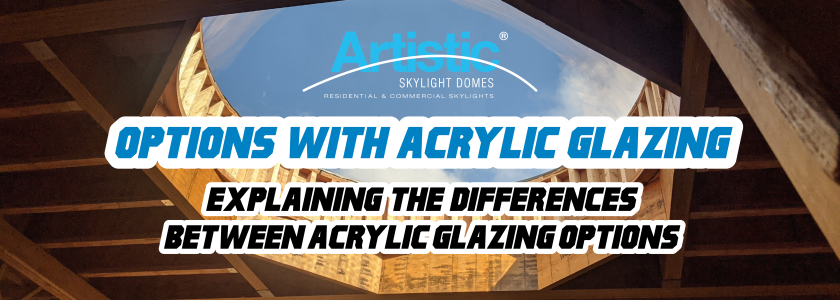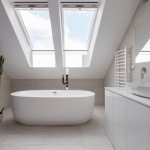
Deciding on acrylic glazing for your skylight? It helps to know your options. Beyond the visual appeal, each type of acrylic glazing has unique advantages and characteristics that will play a factor in the skylight’s performance.
“Choosing between clear, bronze, or white acrylic glazing is about more than aesthetics, even though that’s always a consideration itself,” says Marco Ferrazzo, manager with Artistic Skylight. “Each type of glazing controls the passage of light and heat in various ways, so what you pick will depend on your environment and what kind of effect you’re hoping to achieve.”
There’s a science to the selection. And while that science can get a bit technical, the short version is that there are three primary factors that dictate an acrylic glazing’s performance, including:
Visible light transfer: The percentage of light that makes it through a skylight. High VLT means more light getting through but also higher heat gain.
U-Value (U-Factor): A measurement indicating how effective the window is at stopping heat from passing through it. A low U-Value, for example, will mean less heat transmission during the summer and less heat escaping the interior environment during the winter.
Solar heat gain coefficient (SHGC): This number represents the percentage of solar radiation that is allowed to pass through a skylight. Here again, a higher SHGC percentage means more warmth will get through. This factor is the most deciding when comparing the different acrylic options.
Hopefully, this breakdown makes it easier to understand the differences between clear, bronze, and white acrylic glazing options. A detailed breakdown of how each performs across these three factors is below.

So, which option is best? That will come down to what you hope to achieve regarding temperature levels, energy efficiency, and desired sunlight. Generally, the selection can be broken down as such:
- Clear: Self-explanatory and recommended when the maximum amount of light is desired.
- Bronze 2412: While still transparent, this material has a bronze tint that will reduce interior solar heat gain, control glare, and prevent bleaching of interior furnishings – all while permitting clear vision to the exterior.
- White 2447: A fully translucent material used for light diffusion, reduced heat, glare, and privacy.
“There’s a lot of science behind the selection, which is why we get a lot of questions about what glazing works best,” says Ferrazzo. “Our job is to make the options easy to understand and match customers with the glazing that fits what they’re hoping to achieve.”



